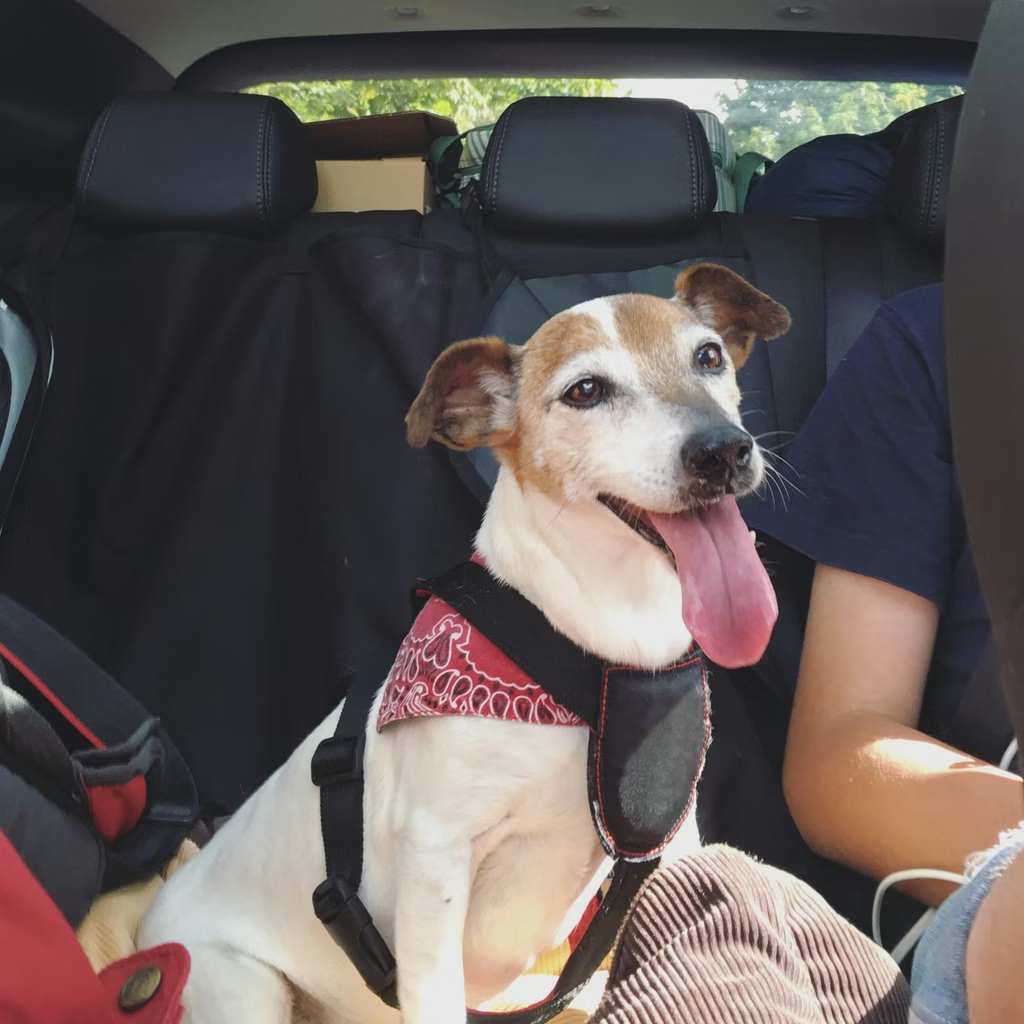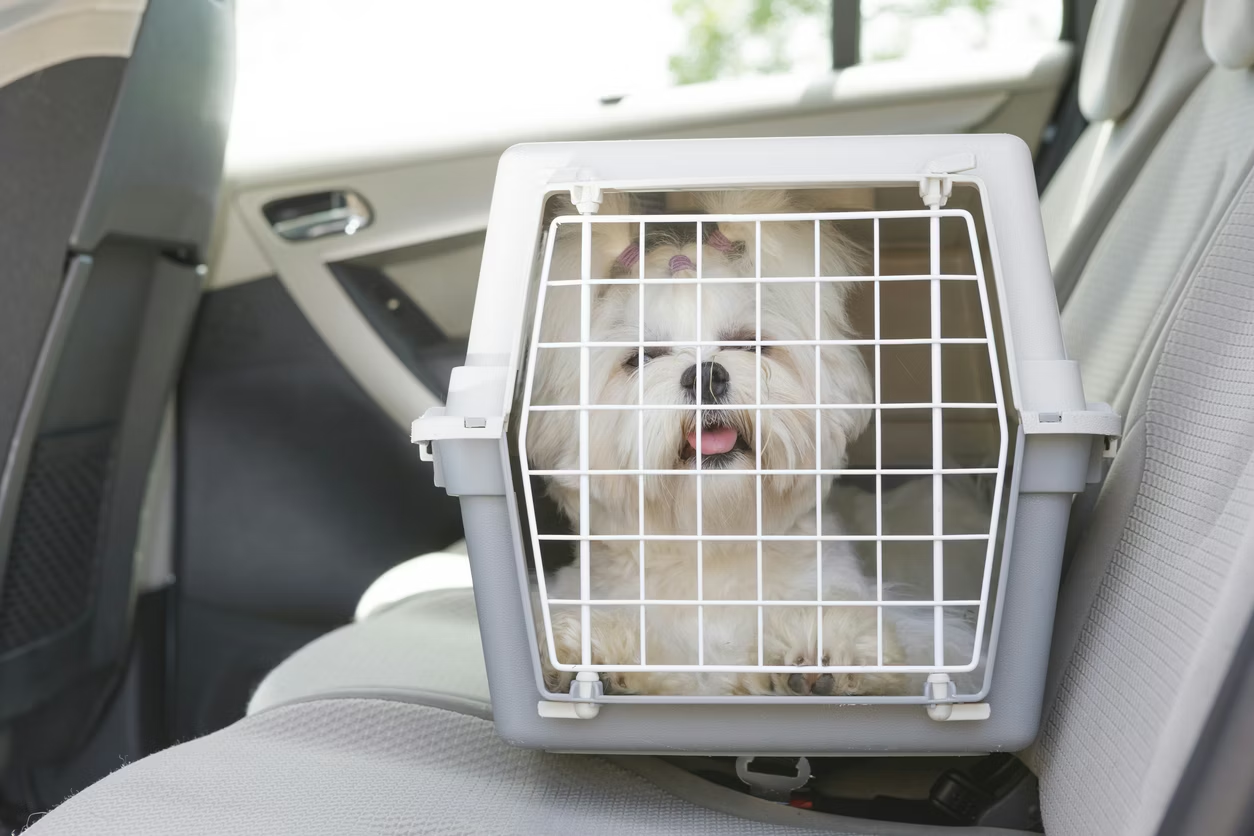Motion sickness is a common condition in dogs that can turn a fun getaway into an unpleasant experience for pets and their travel companions. Luckily, there are things you can do to lessen your dog’s symptoms and steps you can take to help them overcome queasy feelings. By understanding more about motion sickness, you can make sure your next outing is focused on having fun, not managing a sick pup.
What is motion sickness?
According to the Cleveland Clinic, motion sickness in humans occurs when the parts of the body responsible for sensing motion—including the inner ear, eyes, joints, and muscles—send conflicting information to your brain. When the brain doesn’t know how to interpret the signals it’s sent, it can trigger nausea or other unpleasant feelings. The same concept applies to motion sickness in dogs.
Dogs with motion sickness experience nausea and discomfort when travelling in a moving vehicle. These ill feelings often happen during car rides, though they can also happen in boats, planes, or any other scenario where a dog is exposed to a lot of motion.
How do I know if my dog is car sick?
Many pet parents have had the experience of heading out on a road trip with their pup, only to hear the dreaded sound of retching coming from the back once they hit the open road.
Though vomiting is the most obvious sign of motion sickness in dogs, other signs may be more subtle or occur before vomiting begins. These signs include:
- Excessive drooling
- Panting
- Whining
- Lethargy
- Restlessness
- Lip licking
- Defecation
If you notice any of these signs during car rides or other travel, there’s a good chance your dog is experiencing motion sickness.

Causes of motion sickness in dogs
As mentioned, motion sickness generally occurs when your dog’s brain gets mixed signals that it’s unsure how to process. But it can be a little more complicated than that. Motion sickness in dogs can stem from various factors, including:
- Age: Puppies and young dogs are more prone to motion sickness, possibly because their inner ear structures, which help with balance, are not fully developed. As they grow, some dogs outgrow this condition.
- Anxiety or stress: Dogs that have a negative association with car rides—such as equating them with a trip to the vet—or that ride in the car very infrequently may show signs of anxiety when travelling by car.
- Genetics: Some dogs may be genetically predisposed to motion sickness. According to analysis done using Wisdom Panel DNA results and patient files from dogs diagnosed with motion sickness by a veterinarian, our team of scientists found a strong genetic component to motion sickness. In fact, our Premium DNA test will indicate if your dog is more likely to develop motion sickness than other dogs.

How to treat or prevent motion sickness in dogs
There are a few ways to approach treatment for motion sickness. Some involve steps you can take as a pet parent, while others require partnership with a veterinarian. However, it’s always best to talk with your veterinarian about any concerns you have with your pet. They’ll be able to rule out other causes of your dog’s symptoms and make sure the plan you create considers your pet’s overall health.
Behavioural and environmental strategies
The suggestions below pertain to car rides. The car is the easiest environment to control, and helping your dog feel comfortable riding in it will pave the way for trips on boats, planes, or other modes of transportation.
- Early training: Getting your pup used to the car at a young age will help them avoid motion sickness later in life. Start by sitting with your dog in the car and turning on the engine. Then, take short car rides—just around the block. Gradually increase the duration of your trips as your dog gets used to being in a moving vehicle.
- Create a comfortable environment: Ensure your dog feels secure in the car. Use a crate or a dog seatbelt to provide a sense of safety, and bring your dog’s favourite bed or blanket from home.
- Positive reinforcement: Associate car rides with positive experiences. Offer treats and praise while in the car, and take your dog to enjoyable places like the park.
- Take frequent breaks: During long trips, take regular breaks to allow your dog to stretch, relieve themselves, and get some fresh air.
Medications
For dogs with severe motion sickness, your veterinarian might recommend medication. Some common options include:
- Anti-nausea medications
- Anti-anxiety medications
Natural remedies
If you prefer natural solutions, there are several options to consider:
- Pheromones: Ask your veterinarian about products that use dog-specific pheromones known to help keep pups calm.
- Ginger: Ginger is known for its anti-nausea properties. Ginger supplements, if recommended by your veterinarian, may be helpful.
Final thoughts
Motion sickness in dogs is a common issue that can be managed or even prevented with the right strategies. It takes patience and commitment, but recognising the signs of motion sickness and implementing practical solutions can make car rides or other trips fun and relaxing for you and your pup.
Additional resources




